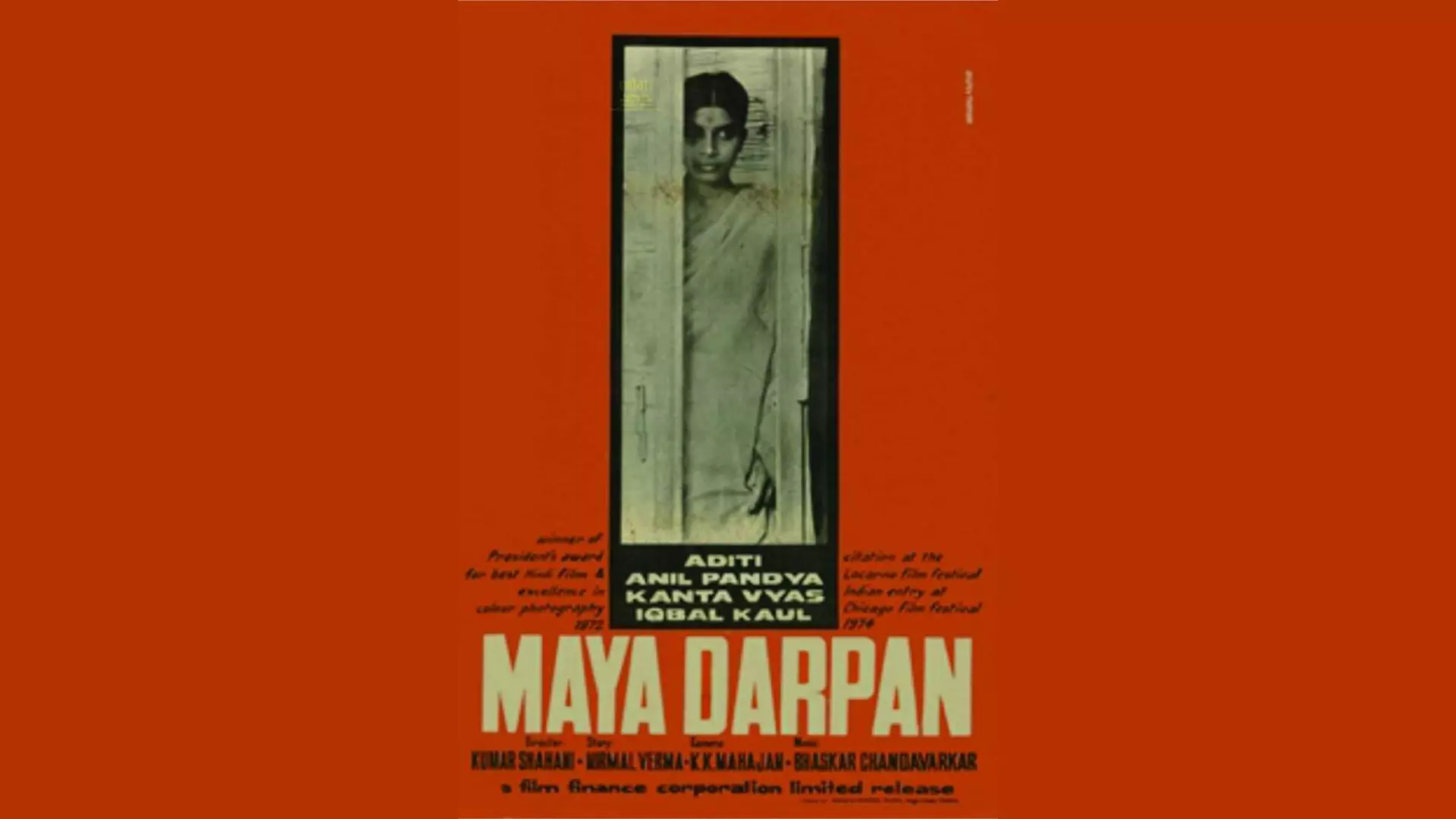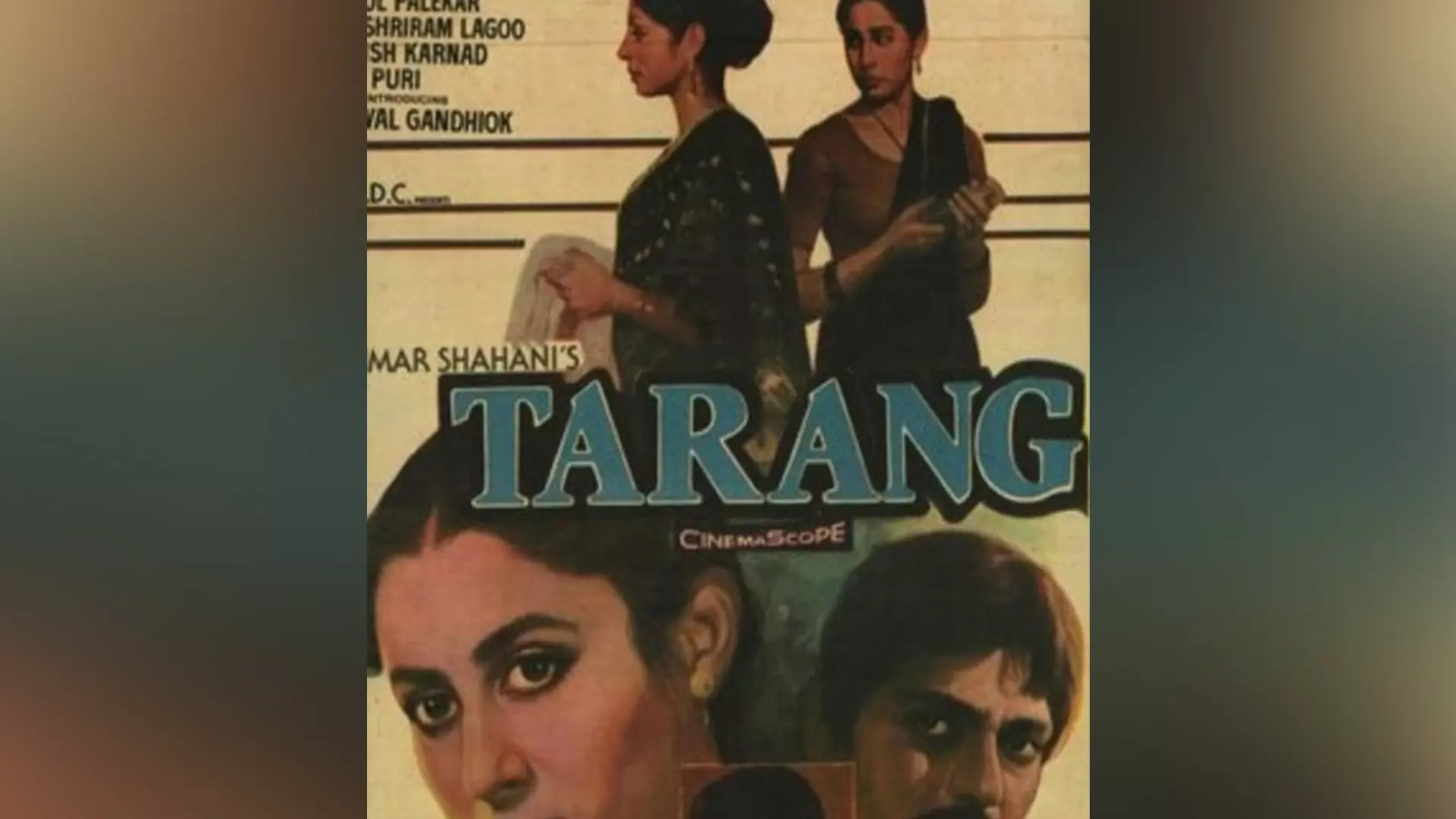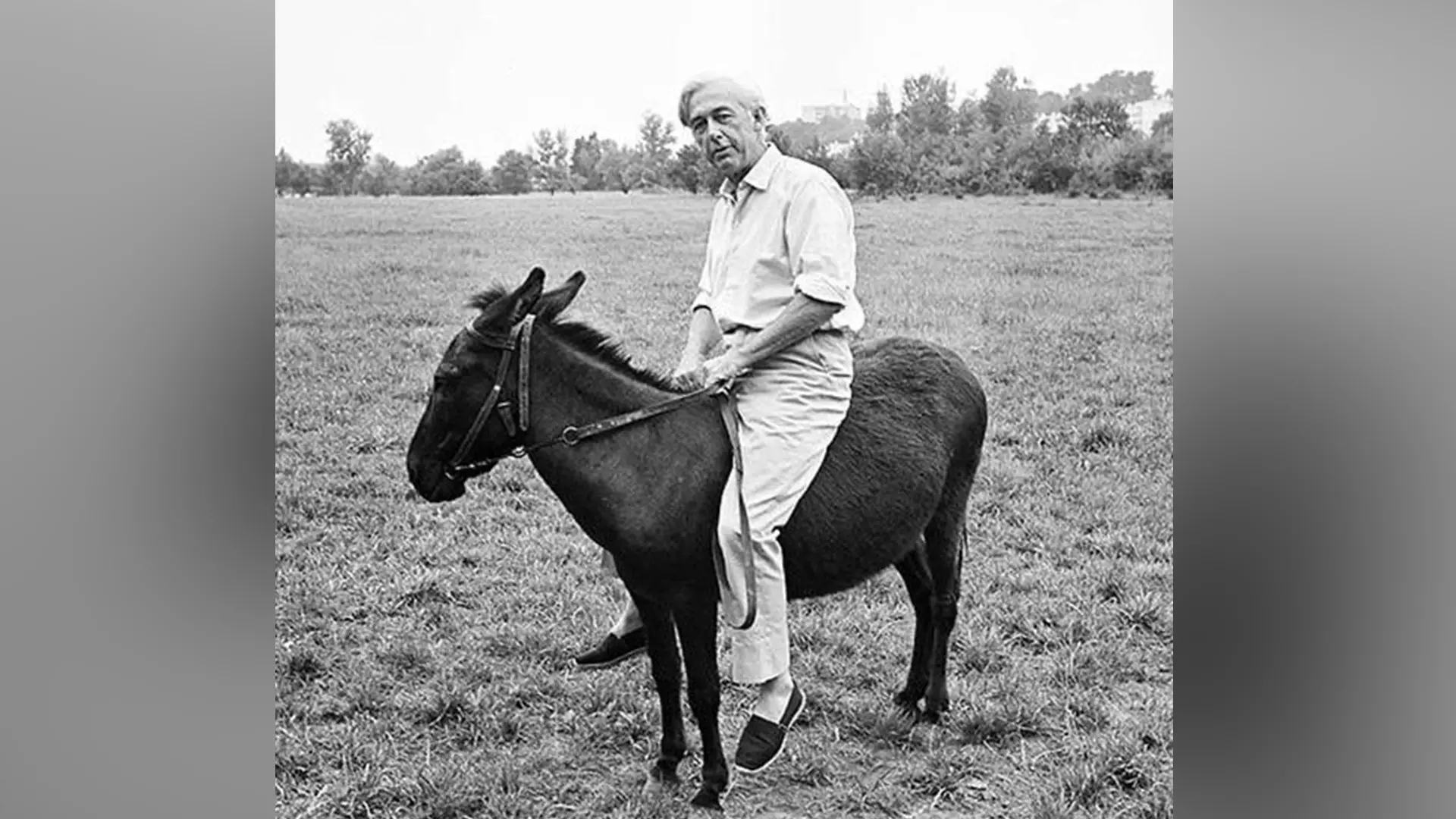
- Home
- India
- World
- Premium
- THE FEDERAL SPECIAL
- Analysis
- States
- Perspective
- Videos
- Sports
- Education
- Entertainment
- Elections
- Features
- Health
- Business
- Series
- In memoriam: Sheikh Mujibur Rahman
- Bishnoi's Men
- NEET TANGLE
- Economy Series
- Earth Day
- Kashmir’s Frozen Turbulence
- India@75
- The legend of Ramjanmabhoomi
- Liberalisation@30
- How to tame a dragon
- Celebrating biodiversity
- Farm Matters
- 50 days of solitude
- Bringing Migrants Home
- Budget 2020
- Jharkhand Votes
- The Federal Investigates
- The Federal Impact
- Vanishing Sand
- Gandhi @ 150
- Andhra Today
- Field report
- Operation Gulmarg
- Pandemic @1 Mn in India
- The Federal Year-End
- The Zero Year
- Science
- Brand studio
- Newsletter
- Elections 2024
- Events
Remembering Kumar Shahani: Writers, filmmakers, critics come together for a glowing tribute

When Kumar Shahani (1940-2024), who made movies like Maya Darpan (1972), Tarang (1984) and Kasba (1990) died in Kolkata on February 24, tributes poured in from various quarters. However, a group of admirers of Kumar paid their tributes to their favourite director in a special way. Called ‘Friends of Kumar’, the group comprising filmmakers, critics, scholars and students, brought out a...
When Kumar Shahani (1940-2024), who made movies like Maya Darpan (1972), Tarang (1984) and Kasba (1990) died in Kolkata on February 24, tributes poured in from various quarters. However, a group of admirers of Kumar paid their tributes to their favourite director in a special way. Called ‘Friends of Kumar’, the group comprising filmmakers, critics, scholars and students, brought out a booklet on the occasion of “Remembering Kumar Shahani”, a commemorative event held at Kalabhavan Theatre in Thiruvananthapuram recently.
“Kerala was very dear to Kumar. He spent a lot of time in Kerala meeting people, visiting places. Kumar was fascinated by the performing art practices and unique culture, history and global interactions of Kerala from time immemorial. He dreamt of living in Kerala. This is our humble effort to pay homage to our dear Kumar,” says MR Rajan, a documentary filmmaker and a member in the group. Rajan’s documentary When the bird became a wave, a personal recording of Kumar Shahani during his visit to Kerala between 2010 and 2014, was also screened as part of the remembrance meet.

Maya Darpan was Kumar Shahani’s debut feature film.
With more than 25 articles written by filmmakers, scholars, journalists and admirers of Kumar, the booklet is a timely tribute to the versatile filmmaker. The articles touch on every aspect of Kumar Shahani, from the beginning to the end of his career as a filmmaker. Besides, it also has two poems written by Kumar, and two interviews in which he talks about his experience in Paris during the May 1968 revolution and his involvement with filmmakers such as Robert Brisson and Jean-Luc Godard.
A student revolt which began in Paris in the beginning of 1968 snowballed into a general strike in which millions of workers joined. It was a remarkable movement which changed French society in a short span of time. Kumar was a ‘sixty-eighter’, a person resident in Europe and participating in the Left upsurge that shook that continent in the late 1960s and reached its climax in May ‘68 in Paris,” writes Prabhat Patnaik, a professor emeritus, Centre for Economic Studies and Planning, Jawaharlal Nehru University, New Delhi, in his tribute to Kumar titled ‘Luminous Mind’.
Kumar was working there with the French film director, Robert Bresson, after graduating from the Pune Film Institute where he had come under the influence of Ritwik Ghatak, and he was swept into the heady revolutionary politics of the time. “The sixty-eighters alas are now departing rapidly; Kumar was the fourth sixty-eighter among my personal friends, after Suneet Chopra, the CPI(M) leader, Vivan Sundaram, the painter and installation artist, and Anil Bhatti, the scholar of German Studies, to have passed away in just the last few months,” he writes.
In an interview to film journalists Rafique Baghdadi and Rajiv Rao, Kumar shares his experience in Paris during this time of the May 1968 revolution. “I saw something beautiful happening to people in May ‘68 in Paris. It was happening on the streets, in the offices, everywhere! One of the slogans, spontaneously discovered, was “Let imagination take over power”. It was not just a slogan. Everyone noticed that suddenly the cold, stiff atmosphere of the western world gave way to the daring warmth of that spring,” says Kumar in the interview which has been reproduced in the booklet.

A still from Kasba.
In an interview with Khalid Mohamed, a journalist-film critic, Shahani spoke about the New Wave experiment that he experienced in Paris during the 1970s. “I often revisited Paris in the 1970s. But I was there earlier from 1967 to ’69. The most important meeting was with Jean-Luc Godard. He was brilliant, nervous, always near suicide, it seemed. He wanted several of the immigrant film makers to collaborate with him as he had done with Chris Marker on ‘Loin du Vietnam’. Godard wanted to make a film sketch on France “independently conceived” but put together by him. I thought the idea was outrageous,” said Kumar in the interview reproduced here titled “Kumar Shahani on days of Bresson, cinema of grace and the unknown.” “The other interesting person was, of course, the cameraman of Une Femme Douce: Ghislain Cloquet. His black and white work is absolutely superb. At Cannes once, I had joined the whole lot of filmmakers, actors and technicians to move to a better, braver world – Milos Forman, Carlos Saura, Roman Polanski, the petite heroine of Susumu Hani’s “She and He” and the stunning beauty Monica Vitti, memorable…”
Born in Larkana (today’s Pakistan) in 1940, Kumar’s parents shifted to Bombay after the partition following India’s independence in 1947. After graduating from Bombay’s Elphinstone College in 1966, he graduated from the Film Institute of India (later Film and Television Institute of India) in Pune, where he stood first in diploma examinations in advanced direction and screenplay writing. His diploma film The Glass Pane was shown at International Students’ Film Festivals in Prague and Amsterdam. In 1967, his post-diploma film Manmad Passenger was made at this film institute.
During 1967-1969, Kumar underwent an intensive study of cinema in Paris, and according to many scholars, it was a time of great intellectual experiments in the formation of Kumar as a filmmaker. “While in France, he worked with Robert Bresson on his first colour film Une femme douce (A Gentle Woman, 1969), an adaptation of Fyodor Dostoevsky’s Russian novella. This brings me to talk about Shahani’s debut feature film Maya Darpan (1972), adapting Nirmal Verma’s Hindi short story of the same name. Maya Darpan is the only film in the history of Indian cinema that explores colours in a uniquely metrical manner, bestowing cinematography with a refreshing grace,” says Amrit Gangar, a Mumbai-based author, historian and curator, in his tribute to the filmmaker titled “Kumar Shahani, a lingering luminosity”.
Mani Kaul (who later made movies like Uski Roti and Duvidha) was Kumar’s classmate when he studied in the Film Institute of India, Pune in the mid-sixties. They were taught by none other than the great filmmaker Ritwik Ghatak, who was the dean of the institute. It was during this time Kumar met DD Kosambi, the great mathematician-historian, in Pune. The interactions with intellectuals like Ghatak and Kosambi ignited the creativity of Kumar.
“I believe that the ambience of 1968 Paris had a deep impact on the way Kumar thought and lived. He had those great teachers in his life, and he interacted with them, he was inspired by them. But he did not imitate them,” writes Udayan Vajpeyi, a Bhopal-based Hindi poet and novelist, in his tribute, “Death of a master filmmaker: Kumar Shahani.” However, the inspiration never gave way to imitation. “Unlike what ill-informed reviewers keep reiterating, his films did not repeat the way his teachers Bresson and Ghatak made their films. Kumar’s cinema engaged with every tradition — whether it was Buddhist tradition or Advait Vedant or modern Marxist traditions of thinking —and through such engagements, created something absolutely novel,” he adds.

A poster of Tarang.
Released in 1972, Maya Darpan won the Filmfare Award for best film but as in the case of many great movies, it also went into oblivion due to some strange reasons. It was after a decade that the movie resurfaced, and today it is considered one of the best movies produced during the parallel cinema movement in India. “Maya Darpan, it was called: a slow, slow, saga of a woman whose inner traumas mapped onto the world: a desert landscape from which she would occasionally depart in the fantasies of luxurious green foliage, a finale of Chhau dance and a tilting camera. The film, it was said, was unreleasable. It was widely attacked — among others, by Satyajit Ray, who accused it of threatening film language with extinction.
Maya Darpan survived however, and even grew and changed, seen by viewers in India and elsewhere in numbers exceeding the viewers of most of the ‘art cinema with a commercial edge’ that many were making at the time,” writes Ashish Rajadhyaksha, a film historian and cultural theorist, in his tribute titled, “Kumar Shahani Redefined the Cinema in India”.
“The problem was, there was no way of commoditising the kind of value his cinema represented: a problem with which he was familiar. Kumar Shahani was said to have been uncompromising. That, if any, was the word that famously defined him. He put India to the test, both in the films he actually made, and more in the ones he could not make,” according to Rajadhyaksha. After Tarang, he made two works of fiction, Kasba and Char Adhyay, adapting Chekhov and Tagore respectively. However, both his completed works and several that remained incomplete or unrealised, were epic in the sense of both scale and structures of signification.

Robert Bresson on the set of his 1966 masterwork Au Hasard Balthazar.
“He meant epic not exactly in Brecht’s sense, or even in Eisenstein’s, but rather in the sense of Kosambi, sometimes borrowing from the Mahabharata. He saw such epic structures as much in classical formations as buried under the dominance of the dramatic-lyrical, the form preferred, by the modern bourgeoisie,” he added.
Kumar was perhaps the most enigmatic figure amongst the brave new filmmakers who rose to prominence during the 1970s and ’80s. “His cinema was fiercely radical and provoked extreme reactions—not just from the uninitiated viewer, but also from practising filmmakers and film theorists. No discourse on cinema was complete without a passionate mention of Kumar and his work,” says Soumitra Ranade, a Mumbai-based director-producer. Who can forget the Smita-Patil-starrer Tarang?
Anup Sing, filmmaker and teacher of cinema, said Kumar (Shahani) had a way of pausing the gesture of one of his hands in midair, the gesture neither a sign nor a signal, but a track, like that of an animal in mud, evoking a weight as well as a rhythm, a suggestion of a pattern, a life, a journey, a direction — all unsettled again as the gesture continued its dance. “When one left him, one took along an experience of uncertainty that, somehow, was never debilitating. Instead, like a moment of caesura in a bandish, it offered innumerable directions. That, to me, was the finest gift he left to us. And so tenderly,” writes Anup Singh, who has taught at film schools and other educational institutions in the UK, Canada, India and Switzerland. The 74-page book “Remembering Kumar Shahani: A collection of articles” is compiled by MR Rajan with the help of Sashi Kumar and V Sasikumar on behalf of Friends of Kumar, Kerala.
